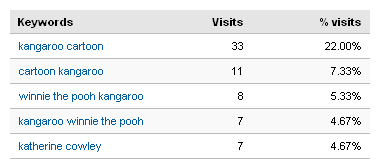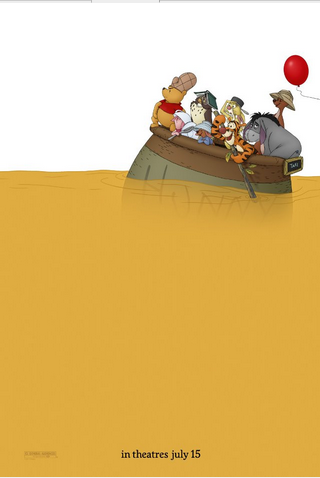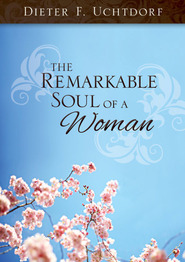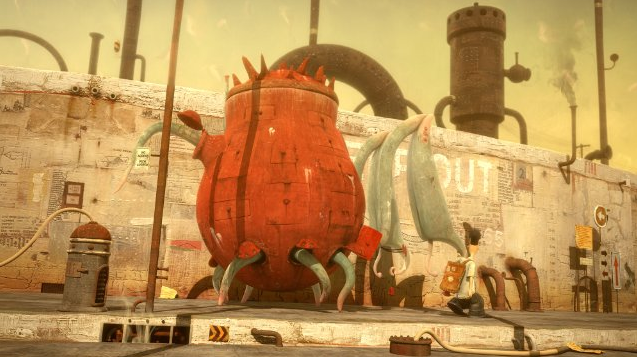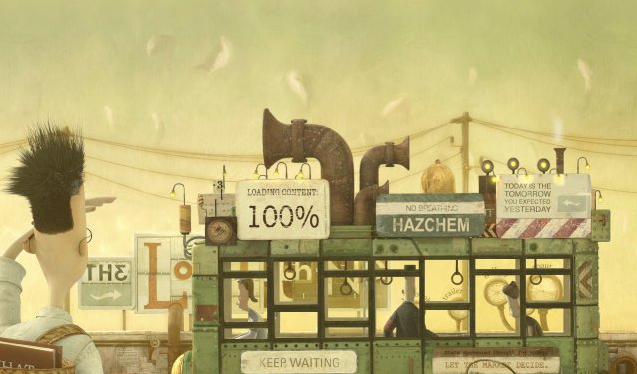Winnie the Pooh: A Review
I just checked my Analytics and it turns out that most of the people who have visited have come here for the express purpose of finding out about kangaroo cartoons. Apparently those who have come to my website in the last month searched for the following things on Google:
For a moment, I was bewildered, and then I remembered that I wrote a post titled Forgetting (or never knowing) Real Kangaroos.
This presents a problem. My website is not about kangaroos, let alone cartoon kangaroos. I’m obviously not sure what this website is about, but it wasn’t meant to be focused on marsupials, Pooh Bears, or animation. As such, I’ve broken the reader-writer contract, which is a big error, especially if you did a Masters degree in Rhetoric. Having someone search for “kangaroo cartoon” and then landing on my website is like going to the movies to watch a romantic comedy and five minutes in realizing that you’re watching a horror film instead.
There are three potential solutions to make me feel better about myself as a writer:
1. Throw in the towel. Give up on this website in despair, because the only people visiting are those who want something other than I’m giving.
2. Overcompensate by targeting other keywords and attempting to rebrand myself as a non-kangaroo person, perhaps even going so far as to delete the original transgressionary post.
3. Run with it. If my readers want to read about cartoon kangaroos, then maybe that’s what I should have been writing about in the first place. It’s a niche market with little competition, but obviously sufficient interest. And I know the perfect thing–I just saw the new Winnie the Pooh movie. I can write about that. So here it goes.
My Review of Winnie the Pooh (2011):
The trailer, for your viewing pleasure…
Winnie the Pooh was truly a delightful film, and unlike certain comic book remakes, can please both original fans and new viewers. I admit, I fit in the “original fan” category. Growing up, I read the books, watched The Many Adventures of Winnie the Pooh (made before I was born–who knew!), watched some of the newer films (like Pooh’s Grand Adventure: The Search for Christopher Robin), and watched dozens of the cartoons (my favorite were the Private Ear ones featuring Tigger as detective).
I was a little worried about a new movie, but was thrilled with what they did with it. Perhaps the only thing that bothered/annoyed me was Owl’s voice, perhaps because the rest of the voices matched my memory, but Craig Ferguson was too far of a departure. The new version of the Winnie the Pooh song played at the opening didn’t work for me (it shifted to a female voice)
But now for what worked. Winnie the Pooh provided a nice mix of old and new, referring to the Winnie the Pooh Canon (yes, it is a canon) without simply replicating it. For example, when Tigger enters we get the refrain of the classic “Wonderful Thing about Tiggers” song, but then we’re treated to a brand new, catchy, fun Tigger song. Throughout, the new music is excellent, and makes we want to buy the soundtrack in addition to the movie.
You know it’s a Canon when the Winnie the Pooh poster doesn’t even include the title of the movie on it.
A lot of the classic Winnie the Pooh tropes are there–Eeyore has lost his tale; Christopher Robin goes missing (Pooh’s Grand Adventure); Pooh needs more honey, etc. But it all feels fresh, not stale, partaking in the genre while reinvigorating it. The things that are departures largely add. For example, Kanga is more motherly, which is rather useful seeing as she is the only female in the cast.
Like in The Many Adventures of Winnie the Pooh, the fourth wall is broken by a narrator who talks to us and to Pooh. We also read some of the words of the book, which in turn reflect the narrative (for example, when Pooh starts thinking only of honey, we see several pages of the word “honey” on the screen).
It was a beautiful, well-crafted film. My husband and I loved it, and so did my daughter (in her first exposure to Winnie the Pooh, besides her Pooh bear bibs). She loved the music and the colors, even if she was a little too young to get the story.
Winnie the Pooh has been rather under-appreciated in terms of box office numbers, but no movie should release the same weekend as the final Harry Potter. It’s not flashy like some of the Pixars and the newer Disney’s, but it’s beautifully made, and I’d definitely recommend it as part of your family movie collection.

